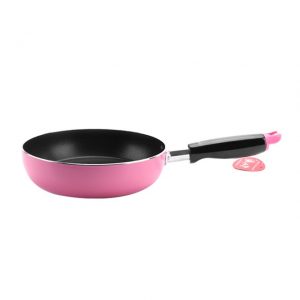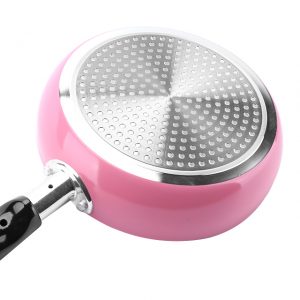The thermal conductivity of the non-stick pan determines the heating speed, the heat dissipation speed of the pan, and the heat capacity of the pan at high temperatures. The better the thermal conductivity of the material, the faster it heats up, and the faster it dissipates heat. Conversely, a material with poorer thermal conductivity will heat up slowly and dissipate heat more slowly.
This also explains from the side why there are so many pots made of materials in the world, and each pot of special material has its special use.
In terms of thermal conductivity alone, the thermal conductivity of aluminum non-stick pans is> iron pan> steel pan. In other words, the non-stick pan heats up quickly and dissipates heat quickly. A pan with this attribute is suitable for our Chinese cooking style, stir-fry!
Iron pots and steel pots heat up slowly and dissipate heat slowly. The slower the pot heats up, the greater the heat capacity in the pot when heating continues. Because of our continuous heating, the temperature cannot be dissipated in time, which will make the temperature in the pot higher and higher, thereby forming a hot vortex in the pot, burning the ingredients even more badly.
You should be able to find that the stew pots in the Northeast are all iron pots, and there is no aluminum pot. Because of the deviation of the thermal conductivity of the iron pot, the heat capacity is large.
Let’s talk about pressure cookers. Most pressure cookers on the market are made of stainless steel. One reason is that stainless steel has a relatively strong hardness and good airtightness. Another reason is that stainless steel has poor heat conduction, slow heating, but also slow heat dissipation, so when you stew for a long time. , The heat capacity in the pot is also large, and the chicken wings that are simmered are all stewed in a stainless steel pressure cooker.







